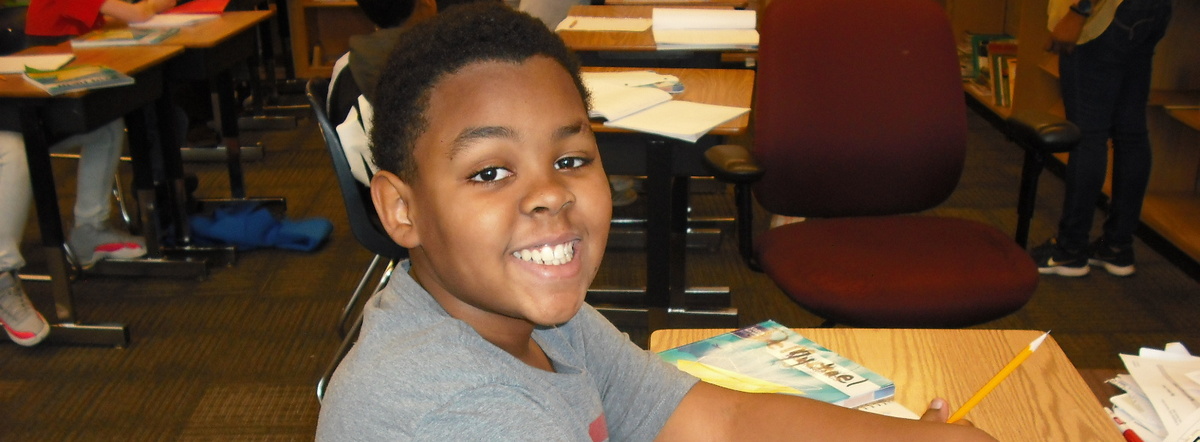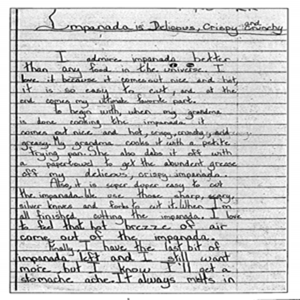Fifth Grade Learning Goals and Resources
Reading
End of Year Goals
Goals
- Draw inferences from fiction and nonfiction text
- Determine a theme of a story, drama, or poem from details in the text
- Summarize fiction and nonfiction text
- Compare and contrast two or more characters, settings, or events in a story or drama, drawing on specific details in a text
- Explain how a series of chapters, scenes, or stanzas fit together to provide the overall structure of a particular story, drama, or poem
- Determine two or more main ideas of a text and explain how they are supported by key details
- Integrate information from several texts on the same topic
- Use context to confirm or self-correct word recognition and understanding, rereading as necessary
- Read grade-level text orally with accuracy, appropriate rate, and expression
Learning Resources
Learning Resources
- World Book Kids
Easy-to-read content for elementary school learners - hundreds of activities, science projects, and experiments
- Britannica School
Homework help resources - find information on countries, animals, people, maps, photos, and articles.
- Smithsonian Tween Tribune
Articles on all sorts of interesting nonfiction topics
- Storyline Online
Award-winning children’s books read aloud by celebrated actors
Writing
End of Year Goals
Goals
- Write a personal experience narrative with descriptive details, dialogue, pacing and a clear sequence of events
- Conduct short research projects that use several sources to build knowledge through investigation about a topic
- Write an informative/explanatory piece that includes multiple sentences focused on a topic, developed with facts, definitions, details, or quotations
- Write an opinion piece that includes logically ordered reasons that are supported by facts and details
- Edit writing in pairs, groups, and independently
- Revise writing in pairs, groups, and independently
- With guidance from adults, use technology to produce and publish writing
Fifth Grade Writing Sample
Math
End of Year Goals
Goals
- Fluently multiply multi-digit whole numbers using the standard U.S. algorithm.
- Solve problems involving division of four-digit whole numbers divided two-digit whole numbers using strategies based on place value, properties of operations, and/or the relationship between multiplication and division. Students will be able to illustrate and explain their solutions by using equations, rectangular arrays, and/or area models.
- Add and subtract fractions with unlike denominators (including mixed numbers) by replacing given fractions with equivalent fractions in such a way as to produce an equivalent sum or difference of fractions with like denominators.
- Interpret a fraction as division of the numerator by the denominator (a/b = a ÷ b). Solve word problems involving division of whole numbers leading to answers in the form of fractions or mixed numbers, e.g., by using visual fraction models or equations to represent the problem.
- Solve real-world problems involving multiplication of fractions and mixed numbers by using visual fraction models or equations to represent the problem.
Learning Resources
We use Everyday Mathematics (Edition 4), which is a comprehensive Pre-K through grade 6 mathematics program developed by the University of Chicago School Mathematics Project and published by McGraw-Hill Education
Learning Tools for Everyday Mathematics (Edition 4):
- Everyday Math 5th Grade (EM4)
- EM4 Math at Home
Help organized by section (unit) for Home Link problems (English and Spanish), selected answers, vocabulary definitions, videos, games and more!
Family Letters
Stay up-to-date on what your child is learning in class. Family Letters contain background information, vocabulary, games and more for each section (unit).
- English Family Letters
- Spanish Family Letters (coming soon)
Student Log-in Information
CLASSLINK - CONNECTED
Use this link to connect to Everyday Mathematics Today’s Lesson, Math Games, Tutorial Videos, Math Toolbox, the Student Resource Book and more.
I-READY
Once your student has logged into classlink they can access i-Ready Math lessons that are at their level.
Additional Resources
- Multiplication & Division Fact Triangle Cards
Fact Triangle cards group together related multiplication and division facts (fact families) to practice mental math facts and arithmetic skills.
- Math Games with a Deck of Cards
Practice math facts and other math concepts with a deck of cards and two players.
- PBS Kids Math Games
Fun online math games.
- Math Playground
Fun math games, logic games, and number puzzles.
- GVSU Regional Math & Science Center
Math games and activities you can play at home or (school). Most everything you need is included: Rules, materials, and possible questions. In most cases, a video to show how to play the game is provided.
- Talking Math With Your Kids
Math is everywhere in our world! You'll find lots of ideas for talking about math with your child--some you've never even thought of.
- YouCubed
Engaging and inspiring math games, tasks, videos, and articles to help students develop a "Math Mindset."
Science
Topics Learned
Physical Science - Structure and Properties of Matter
- Matter and Its Properties
- Define and Measure Matter
- Volume
- Solubility
- Mixtures and Solutions
- Gases
- Phase Changes
- Melting and Freezing
- Liquid to Gas
Earth Science - Earth and Space Systems
- Preserving Resources & Protecting the Environment
- Geosphere, Hydrosphere, Atmosphere, Biosphere
- How Wind is Made
- Clouds
- Water Use
- The Ocean
- Earth’s Layers
- Earth’s Place in Space
- Earth’s Rotation, Revolution, and Tilt
- Seasonal Constellations
Life Science - Matter and Energy in an Ecosystem
- Relationships between animals in an ecosystem
- Food webs
- Interdependence within an ecosystem
- Bottle ecosystem
- Function of plant parts
- Investigate what plants use for food
- The effect of change in an environment
Learning Resources
Learning Tools
- Cereal City Science Website
MPS elementary current science curriculum
- Three Ways to Create an Ecosystem in a Bottle
Three ways to create an ecosystem in a bottle at home
Additional Resources
Social Studies
Topics Learned
U.S. History & Government
- Government: In grade 5, students study the structure and function of the US government with greater depth than in the year before. They learn how our government is organized to limit power by any one branch and how Federalism functions. Students also focus on the Bill of Rights and how these amendments both guarantee rights for citizens as well as limit powers of the government.
- History: The focus for the year is early American history, specifically the study of the many tribes of Indigenous Peoples that inhabited the land that would later become the U.S. Students study European exploration, the Triangular Trade, and the geographic conditions that influenced the development of the original thirteen colonies. During the last marking period students will learn about the various causes of the American Revolution, the war itself, and the creation of a new federal government.
Learning Resources
Learning Tools
- Our Curriculum for Grade 5: MAISA Grade 5 Curriculum
- Discovery Education: Students log in through Classlink




